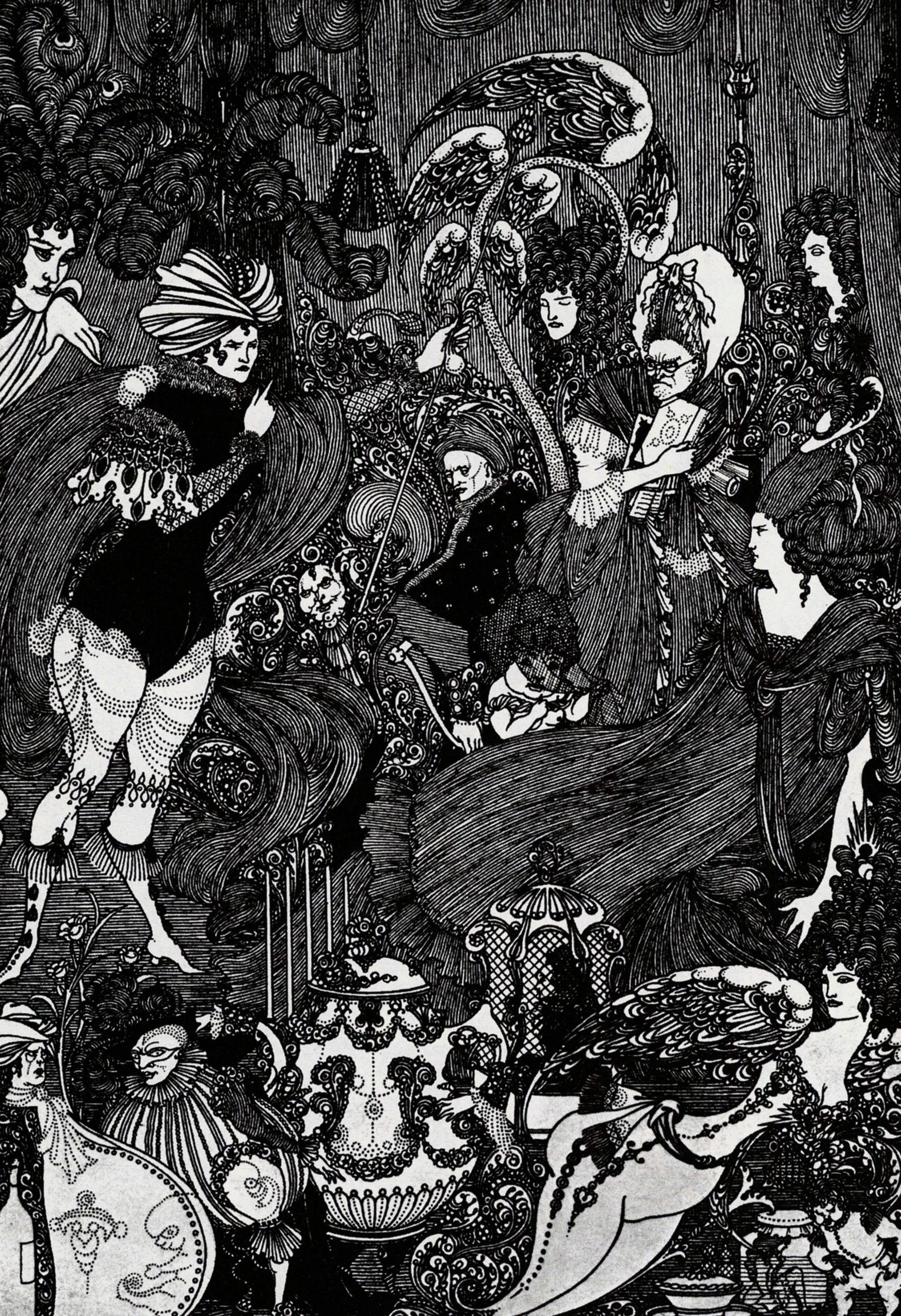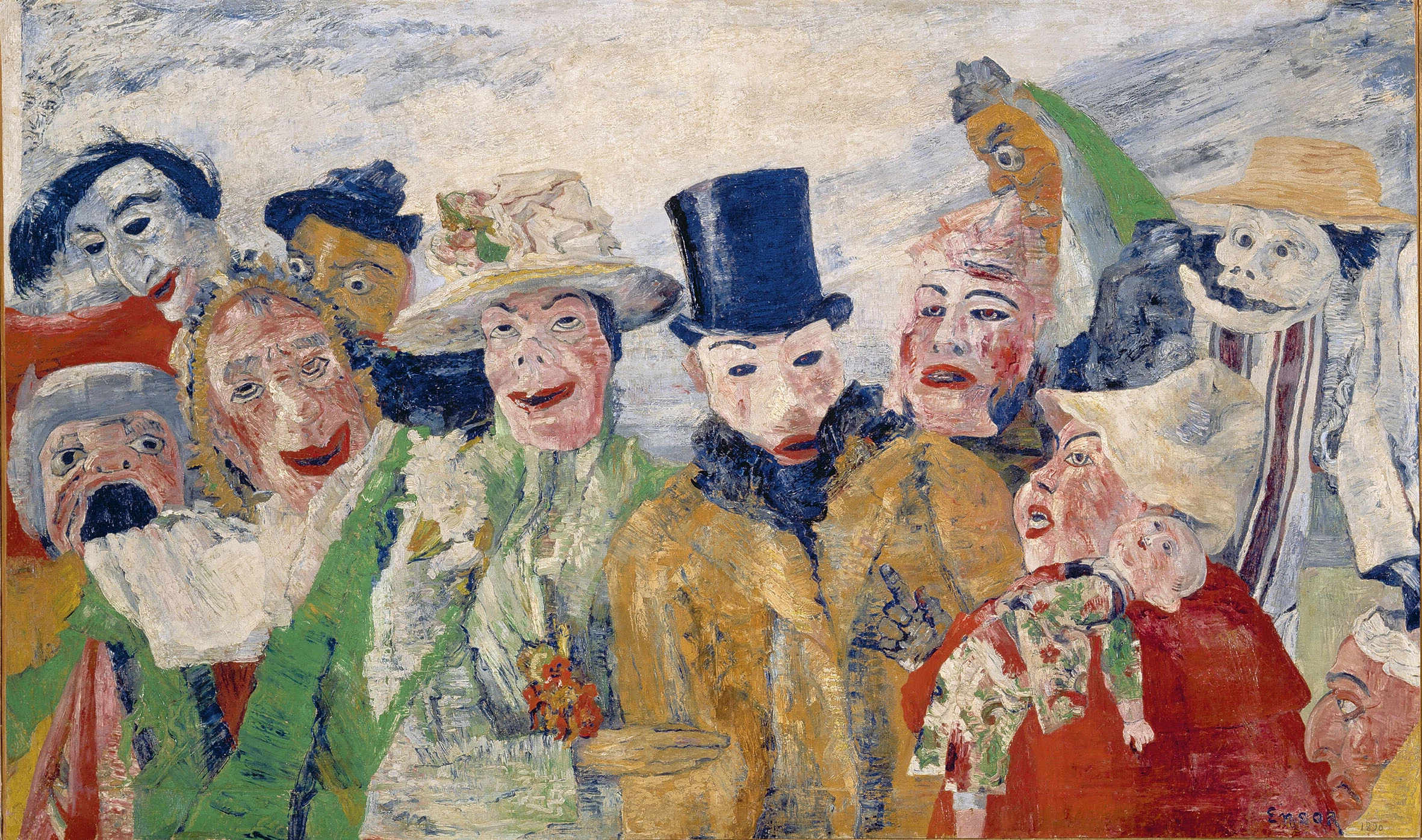
Skeletons Fighting over a Hanged Man James Ensor, 1891

The Bad Doctors James Ensor, 1892

The Cave of Spleen Aubrey Beardsley, 1896

The Dangerous Cooks James Ensor, 1896

Weird shapes, distorted bodies, discomforting faces—this is what grotesque refers to today. But in the 16th century, the word grottesca, or cave-like, was borrowed from Italian to describe the decroative floral elements of the recently-rediscovered Domus Aurea, a lavish underground palace build by the Roman emperor Nero. In the 17th century, grotesque became associated with the exagerated caricatures that cavorted in the elaborate floral decorations in the margins of medieval manuscripts, and evolved from there to focus on the ghastly.




